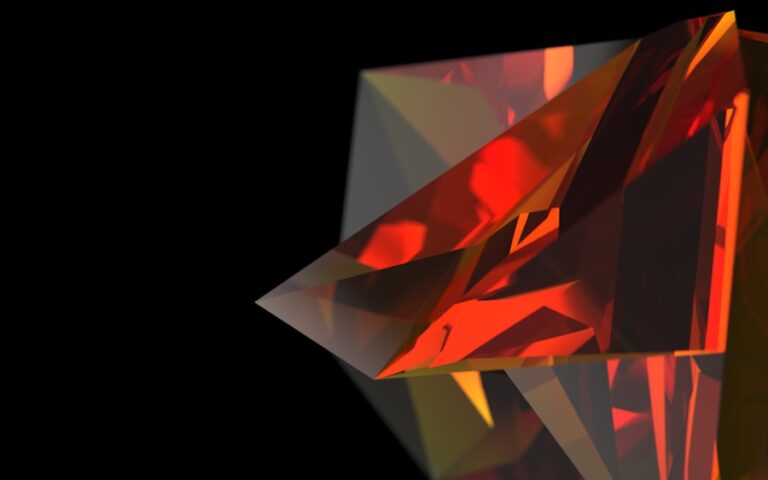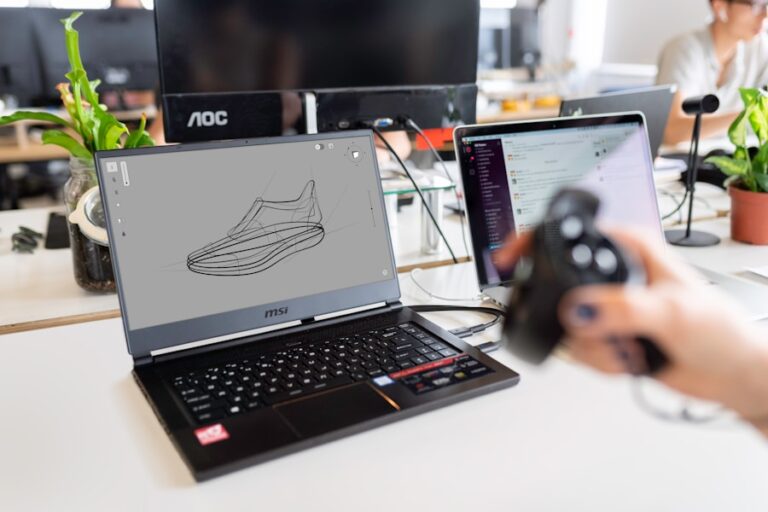The Evolution of Digital Art: How Different Styles Have Shaped the Industry
The early days of digital art can be traced back to the 1950s and 1960s when computer technology was in its infancy. During this time, digital art was limited to simple pixelated graphics and basic computer-generated images. The use of computers for artistic purposes was largely experimental, and artists were just beginning to explore the potential of this new medium. As technology advanced, so did the capabilities of digital art. By the 1980s, 3D rendering software had been developed, allowing artists to create more complex and realistic images. This marked a significant turning point in the history of digital art, as it opened up new possibilities for artists to explore and experiment with the medium.
The rise of digital art in the early days was also closely tied to the development of computer graphics and animation. As computers became more powerful and affordable, artists began to use them to create animated films and videos. This led to the emergence of digital animation as a distinct art form, with artists pushing the boundaries of what was possible with computer-generated imagery. The early days of digital art laid the foundation for the diverse and dynamic medium that it is today, setting the stage for the evolution of digital illustration, photography, graphic design, concept art, and animation.
The Rise of Digital Illustration: How Traditional Art Techniques Influenced Digital Art
The rise of digital illustration can be attributed to the influence of traditional art techniques on the development of digital art. Many artists who were trained in traditional mediums such as painting and drawing began to experiment with digital tools and software, using their knowledge of traditional techniques to inform their digital work. This led to the development of a new style of illustration that combined the best of both worlds, blending the precision and control of digital tools with the expressive qualities of traditional mediums. As digital illustration gained popularity, it began to be used in a wide range of applications, from editorial and advertising to children’s books and graphic novels.
One of the key factors that contributed to the rise of digital illustration was the increasing accessibility of digital tools and software. As computers became more affordable and user-friendly, artists from all backgrounds were able to experiment with digital illustration, leading to a diverse and vibrant community of digital artists. The rise of digital illustration also coincided with the growth of the internet and social media, providing artists with new platforms to share their work and connect with other creatives. Today, digital illustration continues to thrive as a popular and influential art form, with artists constantly pushing the boundaries of what is possible with digital tools and techniques.
The Impact of Photography on Digital Art: From Photo Manipulation to Digital Collage
The impact of photography on digital art has been profound, shaping the way that artists approach image-making and visual storytelling. With the advent of digital photography and image editing software, artists gained new tools and techniques for manipulating and altering photographic images. This led to the rise of photo manipulation as a popular form of digital art, allowing artists to create surreal and fantastical images by combining and altering photographs in creative ways. Photo manipulation has become a widely used technique in fields such as advertising, fashion, and fine art, blurring the lines between reality and fiction.
In addition to photo manipulation, photography has also influenced the development of digital collage as an art form. Digital collage involves combining multiple photographic images to create a new composition, often with surreal or dreamlike qualities. This technique has been embraced by artists working in a wide range of styles and genres, from abstract and experimental to narrative and figurative. The impact of photography on digital art has been far-reaching, inspiring artists to explore new ways of seeing and representing the world around them. As technology continues to advance, it is likely that photography will continue to play a central role in shaping the future of digital art.
The Role of Graphic Design in Shaping the Digital Art Industry
Graphic design has played a crucial role in shaping the digital art industry, influencing everything from advertising and branding to web design and user interface. As a discipline that combines visual communication with technology, graphic design has been at the forefront of innovation in digital art, pushing the boundaries of what is possible with digital tools and techniques. The rise of desktop publishing software in the 1980s revolutionized the field of graphic design, allowing designers to create complex layouts and compositions with unprecedented speed and precision. This led to a new era of graphic design that embraced digital tools and techniques, paving the way for the diverse and dynamic industry that exists today.
One of the key contributions of graphic design to the digital art industry has been its emphasis on visual storytelling and communication. Graphic designers are trained to convey complex ideas and messages through visual means, using typography, imagery, and layout to create compelling and effective designs. This focus on communication has had a profound impact on other areas of digital art, influencing how artists approach narrative, composition, and visual language. As technology continues to evolve, graphic design will continue to play a central role in shaping the future of digital art, driving innovation and creativity in fields such as branding, advertising, user experience design, and interactive media.
The Emergence of Concept Art and its Influence on Video Games and Film
The emergence of concept art has had a significant impact on the worlds of video games and film, shaping the visual language and storytelling techniques used in these mediums. Concept art is a form of visual development that involves creating preliminary designs and illustrations for characters, environments, and props in video games, films, and other forms of entertainment media. These initial concepts serve as a blueprint for the final designs used in production, helping to establish the look and feel of a project before it is brought to life through animation or live-action. Concept artists play a crucial role in shaping the visual identity of a project, working closely with directors, producers, and designers to bring their creative vision to fruition.
The influence of concept art can be seen in every aspect of video games and film, from character design and world-building to special effects and cinematography. Concept artists are responsible for creating immersive and compelling visual worlds that draw audiences into the story, using their skills in drawing, painting, and digital illustration to bring fantastical ideas to life. The impact of concept art on video games and film has been profound, influencing how stories are told and how worlds are brought to life on screen. As technology continues to advance, concept art will continue to play a central role in shaping the future of entertainment media, driving innovation and creativity in visual storytelling.
The Intersection of Digital Art and Animation: From 2D to 3D Animation
The intersection of digital art and animation has been a driving force behind innovation in both fields, leading to groundbreaking advancements in visual storytelling and character animation. With the advent of computer-generated imagery (CGI) in the 1980s, animators gained new tools and techniques for creating lifelike characters and immersive worlds. This marked a significant turning point in the history of animation, as artists began to explore the possibilities of 3D animation as a medium for storytelling. The rise of 3D animation has had a profound impact on popular culture, influencing everything from feature films and television shows to video games and virtual reality experiences.
In addition to 3D animation, the intersection of digital art and animation has also led to advancements in 2D animation techniques. With the development of powerful software tools such as Adobe Animate and Toon Boom Harmony, animators have been able to create complex 2D animations with unprecedented speed and precision. This has led to a resurgence of interest in traditional hand-drawn animation techniques, as artists explore new ways of combining digital tools with traditional methods. The intersection of digital art and animation continues to drive innovation in both fields, pushing the boundaries of what is possible with visual storytelling and character animation.
The Future of Digital Art: Exploring Virtual Reality and Interactive Art Installations
The future of digital art holds exciting possibilities for exploring virtual reality (VR) and interactive art installations as new mediums for artistic expression. With advancements in VR technology, artists have gained new tools for creating immersive experiences that transport audiences into virtual worlds. VR art allows artists to create interactive environments that respond to user input, blurring the lines between physical space and digital imagery. This has led to a new era of experimentation in digital art, as artists explore new ways of engaging audiences through immersive storytelling and interactive experiences.
In addition to VR art, interactive art installations have also emerged as a popular form of digital expression. These installations often combine elements of sculpture, sound design, projection mapping, and interactive technology to create dynamic and engaging experiences for viewers. Interactive art installations have been embraced by museums, galleries, festivals, and public spaces around the world, providing audiences with new ways of experiencing art that go beyond traditional forms of exhibition. As technology continues to evolve, it is likely that VR art and interactive installations will continue to play a central role in shaping the future of digital art, driving innovation and creativity in immersive storytelling and interactive experiences.
In conclusion, the history of digital art is a story of innovation, experimentation, and creativity that continues to evolve with each new technological advancement. From its early days as pixelated graphics to its current state as a diverse and dynamic medium encompassing illustration, photography, graphic design, concept art, animation, VR art, interactive installations, and beyond – digital art has become an integral part of contemporary culture. As technology continues to advance, it is likely that digital art will continue to push boundaries and explore new frontiers in artistic expression. Whether through virtual reality experiences or interactive installations, the future holds exciting possibilities for how we engage with digital art as both creators and audiences.





